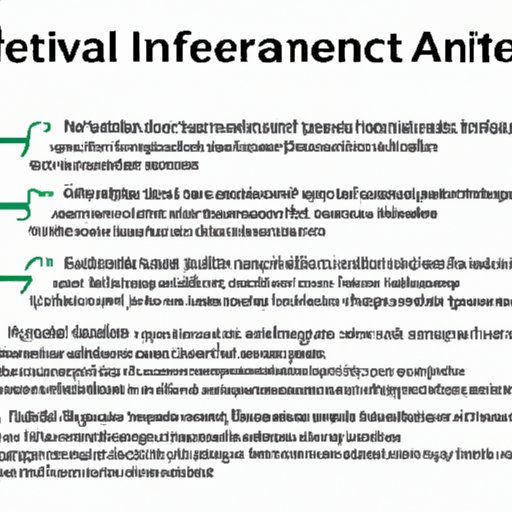Introduction
Alternative investments are those that are outside of the traditional stocks, bonds, and cash. They can include everything from real estate, private equity, and hedge funds to commodities, cryptocurrencies, and other derivatives. As an investor, it’s important to understand the benefits and risks associated with alternative investments before diving into them. This article will explore what alternative investment is, who should invest in alternatives, the types of alternative investments, the pros and cons of investing in alternatives, how to get started, and how to diversify your portfolio.
Definition of Alternative Investment
Alternative investments are assets that are not publicly traded on a stock exchange. These investments can include real estate, private equity, hedge funds, commodities, and more. According to Investopedia, “Alternative investments are non-traditional asset classes that can provide greater diversification benefits and higher returns than stocks, bonds, and cash.”
Who Should Invest in Alternatives?
Alternative investments are generally considered to be appropriate for investors with a high net worth or sizable investment portfolio. They may also be suitable for those looking to diversify their portfolio beyond stocks and bonds. According to the Global Investment Performance Standards (GIPS), “Alternative investments are suitable for investors with a long-term horizon and a willingness to accept higher volatility.”

Exploring the Benefits of Alternative Investment: A Guide for Investors
Alternative investments offer several potential benefits to investors. Here are some of the key advantages of investing in alternatives.
Low Correlation to Traditional Assets
One of the primary advantages of alternative investments is their low correlation to traditional assets like stocks and bonds. According to a study by the CFA Institute, “Investments in alternative assets such as real estate, commodities, and hedge funds tend to have a lower correlation to traditional asset classes such as stocks and bonds. This can provide investors with a more diversified portfolio and help to reduce overall portfolio volatility.”
Higher Return Potential
Another benefit of alternative investments is the potential for higher returns. According to a study by the International Monetary Fund, “Alternative investments may provide higher returns than traditional investments due to their higher level of risk. However, these returns are not guaranteed and investors should conduct thorough due diligence before investing.”
Risk Management Strategies
Alternative investments can also be used to manage risk. According to a study by the Financial Industry Regulatory Authority, “Alternative investments can be used to manage risk through strategies such as hedging, arbitrage, and market timing. These strategies can be used to limit losses and protect gains in volatile markets.”

An Overview of the Types of Alternative Investments
Alternative investments come in many shapes and sizes. Here is an overview of some of the most common types of alternative investments.
Private Equity
Private equity is a type of alternative investment that involves investing in privately held companies. Private equity firms typically take a hands-on approach to managing the companies they invest in and often seek to increase the value of the company over time. According to a study by the American Investment Council, “Private equity firms are able to take a longer-term view of investing, which allows them to focus on creating value rather than short-term profits.”
Real Estate
Real estate is another type of alternative investment. This involves investing in physical property such as residential and commercial properties. Real estate investments can provide a steady stream of income through rental payments and the potential for capital appreciation over time. According to the National Association of Realtors, “Real estate has historically been a solid investment option for investors seeking to diversify their portfolios and generate long-term wealth.”
Hedge Funds
Hedge funds are another popular alternative investment. These are pooled investments managed by professional investors who use a variety of strategies to generate returns. According to a study by the Hedge Fund Research Center, “Hedge funds may offer investors attractive returns with lower levels of risk than traditional investments. However, hedge funds can be complex investments and should only be considered by experienced investors.”
Commodities
Commodities are another type of alternative investment. These are physical goods such as gold, oil, and wheat that are bought and sold on exchanges. Commodity investments can provide exposure to different sectors and regions of the economy and can be used to hedge against inflation. According to a study by the World Bank, “Commodity investments can be an effective way to diversify a portfolio and hedge against inflation. However, commodity prices can be volatile and investors should conduct thorough research before investing.”
Other Alternatives
In addition to the above, there are many other types of alternative investments such as currencies, derivatives, and cryptocurrencies. These investments can provide exposure to different markets and can potentially generate higher returns than traditional investments. However, they can also be risky and investors should do their research before investing.
Investing in Alternatives: The Pros and Cons
Investing in alternatives can be a great way to diversify a portfolio and potentially generate higher returns. However, it is important to understand the risks associated with alternative investments. Here are some of the pros and cons of investing in alternatives.
Pros
Alternative investments can provide access to new markets and asset classes that may not be available through traditional investments. They can also provide higher returns than traditional investments and can be used to hedge against inflation. Finally, alternative investments can be a great way to diversify a portfolio and reduce overall risk.
Cons
Alternative investments can be complex and difficult to understand. They may also involve higher fees than traditional investments and can be highly volatile. Additionally, alternative investments may not be suitable for all investors and should only be considered by experienced investors.
How to Get Started in Alternative Investing
If you’re interested in exploring alternative investments, here are some tips to get started.
Do Your Research
The first step in investing in alternatives is to do your research. It is important to understand the different types of alternative investments and how they work. Additionally, it is important to understand the risks associated with each type of investment and to make sure the investment aligns with your goals and objectives.
Understand Your Risk Tolerance
It is also important to understand your risk tolerance when investing in alternatives. Alternative investments can be highly volatile and it is important to make sure you are comfortable with the level of risk associated with the investment.

Choose the Right Investment Vehicle
Finally, it is important to choose the right investment vehicle for your alternative investments. For example, if you are investing in real estate, you may want to consider a real estate investment trust (REIT) or a property fund. Similarly, if you are investing in private equity, you may want to consider a venture capital fund.

Diversifying Your Portfolio with Alternative Investments
Once you have done your research and chosen the right investment vehicles, you can start to diversify your portfolio with alternative investments. Here are some tips for doing so.
Consider Your Time Horizon
When investing in alternatives, it is important to consider your time horizon. Some alternative investments may take years to realize returns while others may provide shorter-term gains. It is important to understand the timeline for each investment and to make sure it fits with your goals.
Rebalance Regularly
It is also important to rebalance your portfolio regularly to ensure that your investments remain aligned with your goals. This can help to reduce risk and ensure that your portfolio remains diversified.
Monitor Performance
Finally, it is important to monitor the performance of your investments regularly. This will help you to identify any changes in the market and to adjust your investments accordingly.
Conclusion
Alternative investments can be a great way to diversify your portfolio and potentially generate higher returns. However, it is important to understand the risks associated with alternative investments and to make sure they fit with your goals and risk tolerance. Additionally, it is important to do your research, understand your risk tolerance, choose the right investment vehicles, and monitor performance regularly. With the right knowledge and strategy, investing in alternatives can be a great way to achieve your financial goals.
(Note: Is this article not meeting your expectations? Do you have knowledge or insights to share? Unlock new opportunities and expand your reach by joining our authors team. Click Registration to join us and share your expertise with our readers.)
